Chevy Volt: Vega Redux?

The prolonged wait for the Chevrolet Volt reminds me uncomfortably of waiting for the Chevrolet Vega to appear. For GM’s sake, the outcome had better be radically different. Because no one single vehicle did more damage to GM then the highly-hyped Vega.
Beginning in 1968, three years before the star-crossed Vega finally landed, GM cranked up a huge publicity campaign for its coming “import killer,” code named XP-887. Every month in Popular Science, I read of the miraculous XP-887, accompanied by spy sketches. This huge PR build-up was unprecedented. Previously, new cars were kept under wraps as long as possible. GM was raising the expectations of the whole nation.
The Vega became a cause of national interest: if Americans could beat the Russians to the moon, GM could damn well beat back the imports.
Kinda like the new Chevy Volt.
When I finally saw photos, I began to salivate. The Vega was as cute as a button: those sparkly bright eyes, that Ferrariesque egg-crate grille, the sleek lines on the fastback coupe and that adorable little wagon. Never mind that the Vega was essentially a baby Camaro, with a low roofline that made it cramped and impractical.
Not unlike the Volt’s squished roof.
My enthusiasm inspired a friend to become a Vega beta-tester. Since the baby Chevy’s prices were rather lofty, he settled for a base two-door sedan. When he showed up with it, I experienced my first GM cold shower; actually, it was more like being waterboarded.
At a time when the imports were only selling fully equipped models, the base Vega made a pole-dancing stripper look dressed for church. Unlike the proto-bling Vegas in the ads, his car had no exterior trim, ill-fitting taxi-cab rubber flooring and grim wall-to-wall hard plastic. There wasn’t even a door on the glove box. I had never seen anything like it before because nobody had built an interior like this before.
The Vega forced GM to confront a cruel fact that it still hasn’t solved: it doesn’t know how to manufacture small cars profitably. Originally intended to compete head-on with the imports, higher production costs forced GM to price the Vega some 10 percent higher. They intended to justify that premium with an extra-well-equipped small car. But in a last-ditch effort in the losing battle with profitability, they made the ad-friendly “custom” interior and exterior pieces optional.
Kinda like GM’s plan to sell the Volt without a battery.
We opened the Vega’s hood and started the engine. An auditory form of CIA-approved torture ensued. Not only did the strangely shaped long-stroke engine “look like it had come off a 1920’s farm tractor” (John DeLorean), it sounded and shook like one too. As fond as I am of old Farmalls, this was nothing like my high school buddy’s zippy and smooth Datsun 510 engine.
And what did GM’s moon-shot program offer in the transmission department? The two-speed Powerglide first saw the light of day in 1949. It felt like half of the engine’s 80 horsepower were somehow lost in translation to the rear wheels.
Unfortunately, the standard three-speed stick was just as much a throwback to the fifties, and had such widely-spaced ratios that Car & Driver said it “feels more like a six-speed with first, third and fifth gears missing.” The fact that the Vega handled well (on glass-smooth pavement) only made the power-train that much more frustrating.
But hope springs eternal. Right from the beginning, Chevy was talking up a performance version being developed with Cosworth. They promised a 180hp Vega was “just around the corner.” When the Cosworth Vega arrived four years later, it had all of 120hp, accelerated from zero to 60mph in nine seconds, and cost twice as much as a regular Vega. Not surprisingly, only 3500 were sold.
My friend went on to endure a number of the Vega engine’s pathological suicidal tendencies: carburetor fires, overheating, distorted blocks, oil consumption. When terminal rust set in after three years, he dumped it for peanuts and bought a Toyota.
Why was the Vega so flawed? It wasn’t actually developed by Chevrolet at all, who might (possibly) have had a (slightly) better idea of what import buyers wanted. GM gave the XP-887 job to a lofty corporate engineering group, and forced the flawed finished product on a reluctant John DeLorean, then President of Chevrolet. On his engineers’ first drive in a prototype, the whole front of the car literally fell off after eight miles.
Chevrolet had already developed a conventional small-car engine, but the GM corporate engineers knew better, and risked all on the world’s first aluminum block without steel cylinder liners.
Kinda like the Volt’s lithium-ion batteries.
But I’ve put my worries aside; companies learn from their mistakes, and lightning never strikes twice in the same place, right?

More by Paul Niedermeyer
Latest Car Reviews
Read moreLatest Product Reviews
Read moreRecent Comments
- MaintenanceCosts Poorly packaged, oddly proportioned small CUV with an unrefined hybrid powertrain and a luxury-market price? Who wouldn't want it?
- MaintenanceCosts Who knows whether it rides or handles acceptably or whether it chews up a set of tires in 5000 miles, but we definitely know it has a "mature stance."Sounds like JUST the kind of previous owner you'd want…
- 28-Cars-Later Nissan will be very fortunate to not be in the Japanese equivalent of Chapter 11 reorganization over the next 36 months, "getting rolling" is a luxury (also, I see what you did there).
- MaintenanceCosts RAM! RAM! RAM! ...... the child in the crosswalk that you can't see over the hood of this factory-lifted beast.
- 3-On-The-Tree Yes all the Older Land Cruiser’s and samurai’s have gone up here as well. I’ve taken both vehicle ps on some pretty rough roads exploring old mine shafts etc. I bought mine right before I deployed back in 08 and got it for $4000 and also bought another that is non running for parts, got a complete engine, drive train. The mice love it unfortunately.

















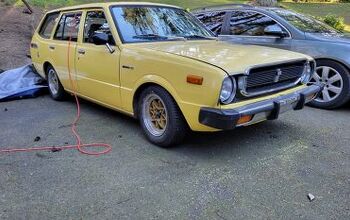
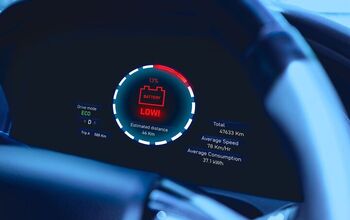
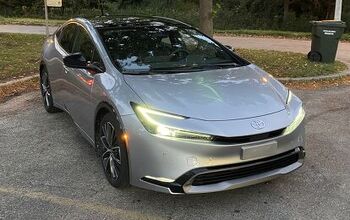


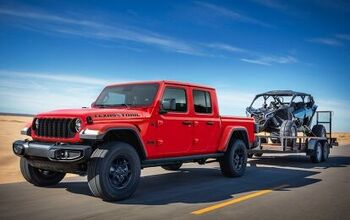


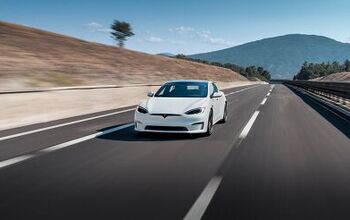

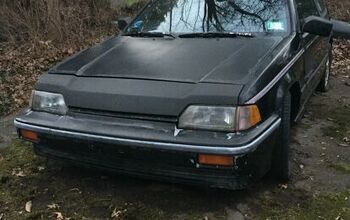





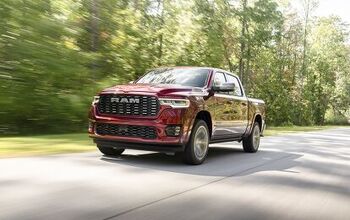
Comments
Join the conversation
Chopper man, I'll try to address (rebut) some of your points: Yes, rust problems were rampant, but the Vega quickly acquired a rep for being worse than average, perhaps because of shortcuts (thinner steel, sealing, etc.) Worse than average is not good enough, especially in conjunction with other problems. I never wrote anything about "replaceable engines"; another commentator made the claim that they were designed/advertised that way. That is simply not the case. I also never said that the Vega was designed to be "disposable". Any suggestion by GM that the Vega and/or its engines were designed to be disposable would have been the kiss of death. If you read Chevy's brochures of that time, you'll see lots of claims about durability. Also, keep in mind, the Vega was priced 10-15% higher than the VW and most other small cars; it wasn't all that cheap, for the times. ($2300 vs. $1800 for a Corolla) Keep in mind that the Vega's #1 competitor was the VW Beetle, which made its rep on reliability and longevity. You're misinformed about the claim of Japanese removing their engines after 60k miles. It's just not true. Here's what happens there: Japan has very strict car inspection programs, and there has been a strong societal pressure to buy new cars every three to four years (that's fading quickly now). Anyway, the combination of these two forces results in many Japanese cars being scrapped with low miles, and the engines are taken out and shipped to the US, where different attitudes prevail. These cars in Japan are NOT getting new engines installed; they're being melted down for steel. I didn't say GM has forgotten its history in regard to the Vega; but I am encouraging them to learn from it, and keep in mind that their history of introducing new technology has been very spotty (Olds diesel, V8-6-4, etc.) I truly hope the Volt works well out of the box, as it will be an interesting addidtion to the automotive scene. GM can't afford a slip-up; that's my point.
For two years in the late 80s, I was driven to high school every day by a neighbor in a beige Vega wagon. He was a mechanic at a Pontiac dealership, and had purchased it long ago for very little money (from a dealership customer he'd maintained the car for since new) and had what rust there was repaired and the car repainted, then put iron sleeves in the block, bypassed the emissions system, and kept it in the garage whenever there was snow/salt on the ground. In that configuration it was fast, and fun, and not terribly unpleasant to be in; he would tell me stories of working on Vegas when they were new and he was a newly-minted mechanic, with stacks of crate engines in the corner for the steady parade of Vegas that came in with warped blocks -- only to have the same cars come back in for another, because the new engines had the same problem as the old. When he took it for mandatory smog testing, he would run it on alcohol, then drive home and rebuilt the carb. As far as I know, he still has it.